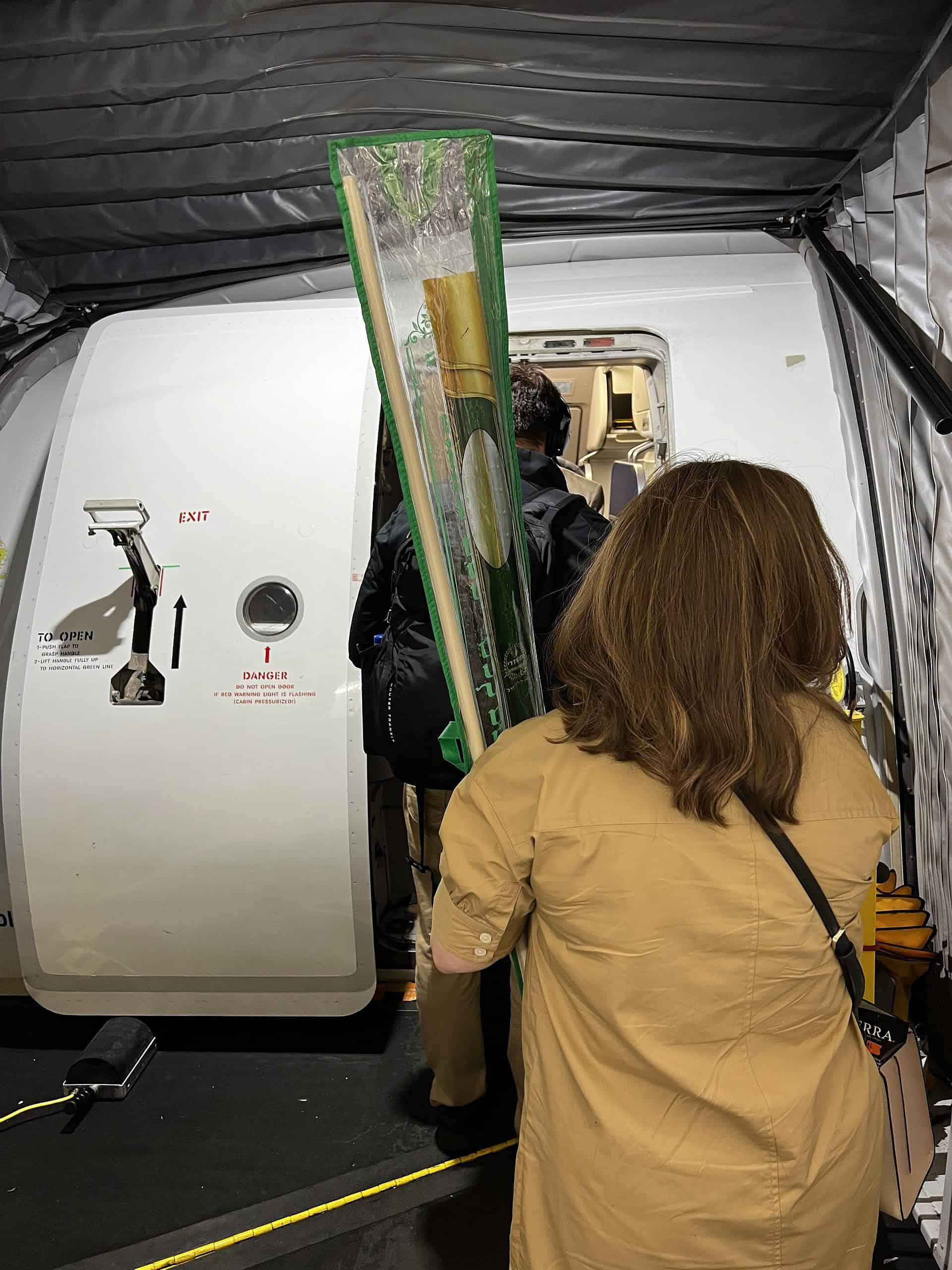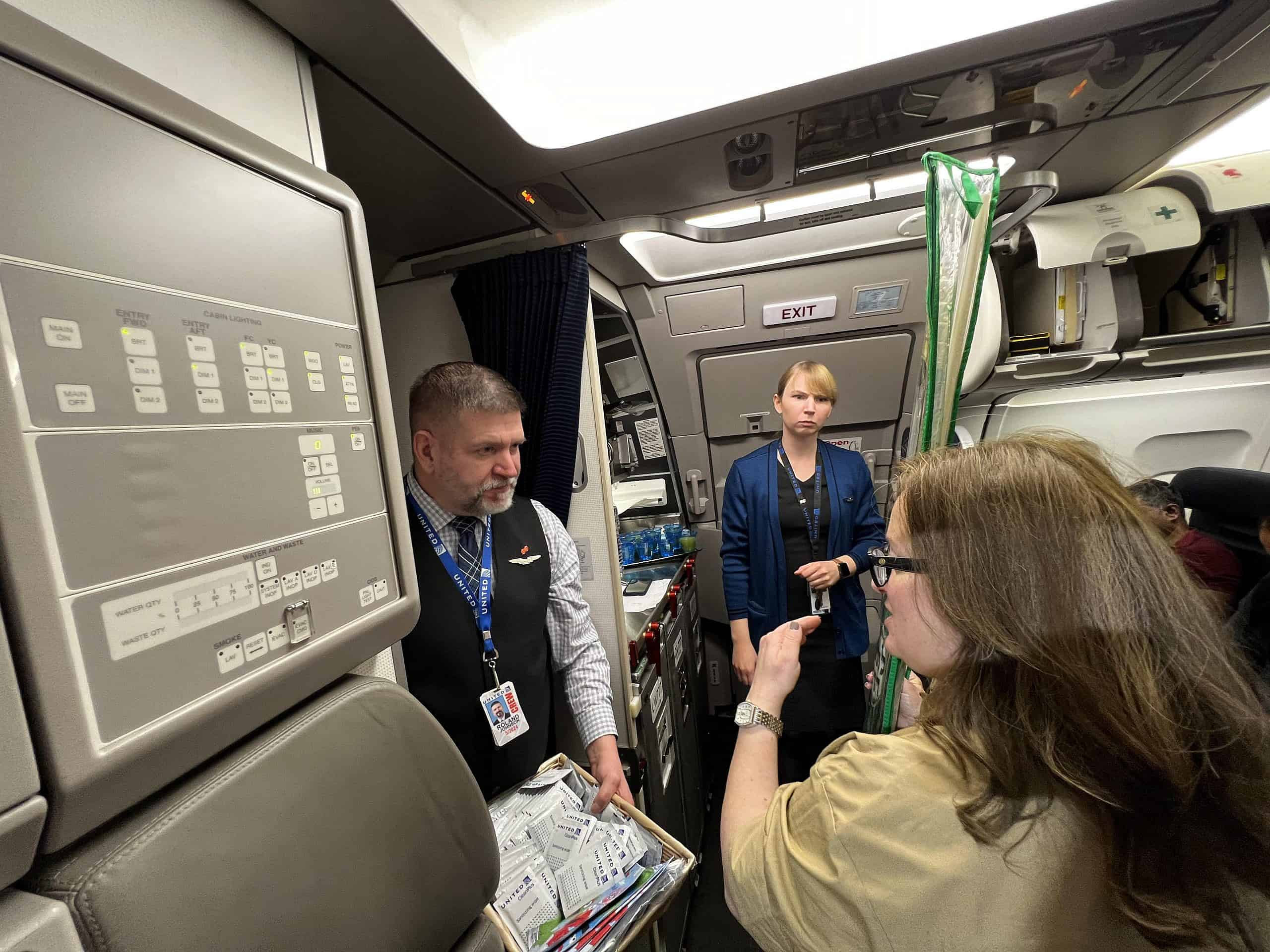“We were a little nervous about it, but thankfully, it worked out very well,” one traveler told JNS.
Sergio Carmona
(JNS)
Unlike other Jewish holidays, Sukkot comes with portable accessories—the “Four Species” or “Four Kinds”—the etrog (citrus); lulav (palm frond); hadas (myrtle); and aravah (willow)—used throughout the holiday. That means that those who travel during the intermediary days of the seven-day holiday have to transport several fragile, unwieldy, and for most people, unusual-looking ritual objects.
Travelers can transport their Sukkot accessories in either their carry-on or checked baggage, which the Transportation Security Administration will screen, TSA spokeswoman Lisa Farbstein told JNS.
Still, those who have traveled during holiday time in recent years told JNS that the experience can be uncomfortable, particularly when others aren’t familiar with the holiday and its accouterments, including at airports.

‘Offer it to fellow travelers’
Rabbi Motti Seligson, director of media relations for Chabad.org, flew from the United States to Canada on Sept. 28 and had no issue at Canadian customs, where officials seemed to be familiar with the holiday.
He advised other travelers to be kind and friendly. “You may have some people who are curious, but a quick conversation with a smile would familiarize any curious folks,” he told JNS.
“If you’re traveling with a lulav and etrog, be aware that it’s a privilege that you have one and offer it to fellow Jewish travelers, who may not have their own and didn’t have the opportunity to do the mitzvah,” he said, using the Hebrew word for a ritual commandment.
Last year, Seligson had an “absolutely smooth” experience going through airport security with his lulav and etrog. (The combination of the “Four Kinds” is often referred to as just the lulav and etrog.)
“It was clear that security officials and customs officials were very aware of Sukkot and about the lulav and etrog and their significance,” he told JNS. “They were extremely accommodating.”

‘They looked relieved’
Jeffrey Kranzler, a social worker and author in Silver Spring, Md., who is Orthodox, told JNS that he flew with his lulav and etrog during the holiday shortly after 9/11. He noticed that others in the terminal were staring at him and looking uncomfortable.
“I tried to figure out what was going on and realized that my lulav could be construed as something dangerous,” Kranzler told JNS. “I walked over to a few of the people, introduced myself and explained what the lulav was for. They thanked me and looked relieved.”
“Be friendly and open if questions are asked,” he advised other travelers. “Even be ready to initiate a conversation about your lulav and etrog with curious or fearful fellow passengers.”
The social worker also advised Jewish travelers to safeguard their lulav and etrog, which can be quite fragile, with protective cases.

‘This very odd thing’
Mayer Fertig, who is also Orthodox and lives in Teaneck, N.J., flew to Dallas on Sept. 28 with a lulav and etrog. He and his wife, Chani Fertig, encountered curiosity at the airport, he told JNS.
“I think people should be prepared to answer questions out of curiosity, as certainly the security people are going to want to know what it is,” he advised. “Maybe rehearse in your head a quick explanation for this very odd thing you’re carrying onto an airplane.”
Everyone from the TSA agents to the flight crew was polite about the lulav, Fertig told JNS. An X-ray machine flagged his carry-on bag for closer inspection—Fertig thinks it was because of the silver box protecting the etrog.
The TSA agent asked Fertig to open the carry-on and wanted to see what was in the box. Fertig did so and explained the purpose of the etrog. The agent asked if it was a lemon or a lime; Fertig responded that it was a citron. The Fertigs were subsequently able to go on their way.
This was the first time Fertig experienced curiosity about the lulav and etrog while traveling, he said, though he has read about such curiosity in the past.
“This is a thing that happens every year around this time when Jews are traveling,” he told JNS. “They encounter curiosity at a minimum at the airports, primarily because of security.”
He said that his wife provided “cheerful” explanations to anyone who wasn’t familiar with the Sukkot objects.
“They were very politely curious and accepted our explanations,” he said.
Chani Fertig told JNS that the overall experience was “very pleasant.”
“People were very curious. They were accommodating, and they were very nice,” she said. “We were a little nervous about it, but thankfully, it worked out very well.”
Image: Chani Fertig shows an etrog to a TSA agent and explains its ritual Sukkot function on Sept. 28, 2023. Photo by Mayer Fertig.



